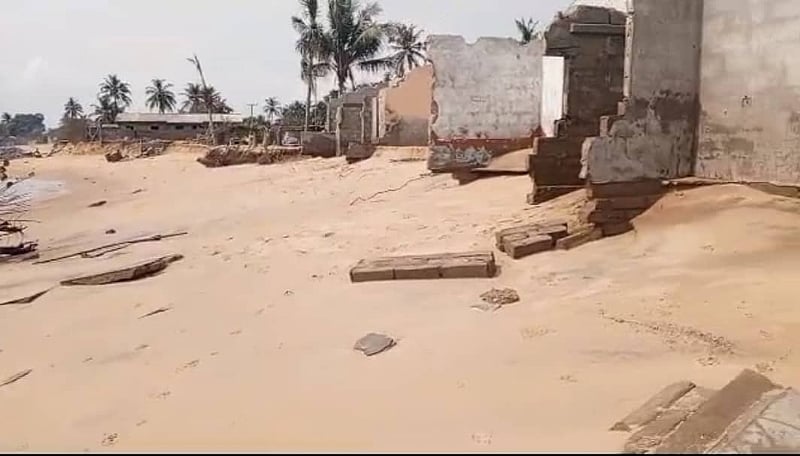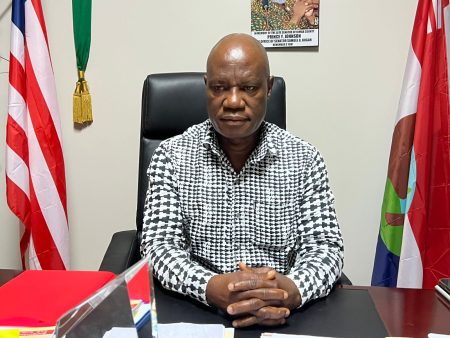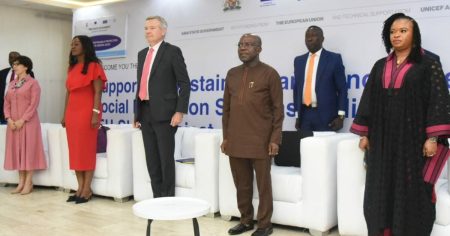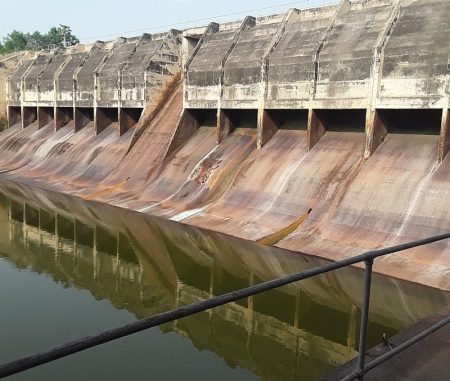The coastal communities of Agavedzi and Salakope in Ghana’s Ketu South Municipality have once again been ravaged by tidal waves, compounding the suffering of residents who have endured repeated assaults from the sea in recent years. This latest incident, occurring over a weekend in late January, follows closely on the heels of a previous event just two weeks prior, demonstrating the relentless nature of the threat. The recurring waves have caused widespread devastation, impacting livelihoods, homes, schools, farmlands, and critical infrastructure across the Volta Region’s coastline. Each incursion brings renewed pleas from residents for government intervention to combat the erosion and safeguard their communities from further destruction. Some residents, resigned to the persistent danger, have taken it upon themselves to salvage building materials like roofs and beams, bracing for the inevitable return of the destructive waves.
The immediate aftermath of the most recent tidal wave event has left many residents homeless, highlighting the urgent need for accommodation. Mr. Eben Assah, the Assembly member for Agavedzi, has reiterated calls for government assistance to alleviate the suffering of the affected communities. While Ghana Gas had pledged to construct 100 two-bedroom apartments for displaced residents by December 2024, only 10 units have been started, and these remain unfinished. Mr. Assah stressed the critical importance of completing these apartments and finding a permanent solution to the recurring tidal waves. He believes extending the existing sea defense project, which currently consists of protective groins, would significantly mitigate the impact of future waves, as the most affected areas lie beyond the current protection.
However, alternative perspectives on addressing the issue exist within the community. Torgbui Emmanuel Anomoo Tettey, a resident and Chief Fisherman of Salakope, advocates for a different approach. He believes dredging the sea, a method successfully employed in neighboring Togo and Benin, as well as in South Africa and Namibia, would offer a more effective long-term solution than constructing a protective wall. His intimate knowledge of the sea and its dynamics leads him to believe that dredging offers a more holistic and sustainable solution. He urges the government to act swiftly and decisively to protect the communities from the constant fear and uncertainty surrounding the sea’s next destructive visit.
The recurring nature of these tidal wave events reveals a larger issue impacting the Volta Region’s coastline: persistent sea erosion. This phenomenon, driven by factors like rising sea levels, changing wave patterns, and human activities, poses a serious threat to coastal communities throughout the region. The escalating frequency and intensity of these events underscore the urgency for a comprehensive and sustainable solution to protect the region’s vulnerable coastline. The calls for action from local leaders and residents alike highlight the growing desperation and the need for both immediate relief and long-term preventative measures.
The Anlo Youth Council, representing the youth of the Anlo area, has welcomed the commitment made by Volta Regional Minister Mr. James Gunu to tackle the sea erosion problem. Mr. Gunu’s pledge, made before the Appointments Committee of Parliament, to collaborate with other ministries and agencies to address the menace offers a glimmer of hope for the affected communities. However, the youth council emphasizes the need for immediate and sustainable action to translate this commitment into tangible results on the ground. The future of these coastal communities hinges on the effective implementation of comprehensive strategies to mitigate the impacts of sea erosion and protect lives and livelihoods.
The situation in Agavedzi and Salakope provides a stark illustration of the challenges faced by coastal communities grappling with the impacts of climate change and environmental degradation. The recurring tidal waves, coupled with the ongoing erosion, represent a complex problem requiring a multi-faceted solution. The contrasting opinions on the most effective course of action, whether extending the sea defense wall or dredging the sea, highlight the need for careful consideration of all available options. Ultimately, a successful solution will require collaboration between government agencies, local communities, and experts to develop a sustainable strategy that addresses both the immediate needs of displaced residents and the long-term protection of the Volta Region’s coastline. The future of these communities depends on swift and decisive action to prevent further devastation and ensure the long-term resilience of the region’s coastal areas.














